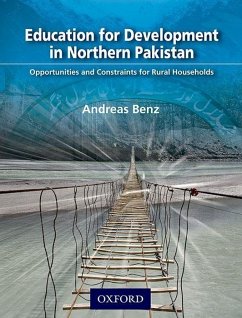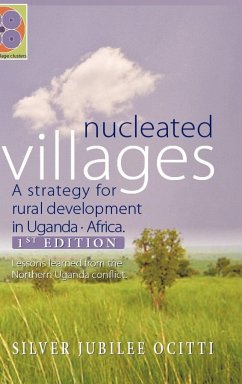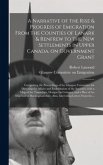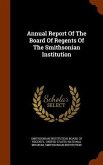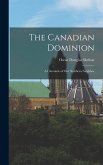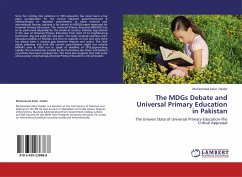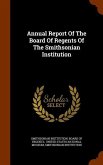Andreas Johannes Benz
Education for Development in Northern Pakistan
Opportunities and Constraints for Rural Households
Andreas Johannes Benz
Education for Development in Northern Pakistan
Opportunities and Constraints for Rural Households
- Gebundenes Buch
- Merkliste
- Auf die Merkliste
- Bewerten Bewerten
- Teilen
- Produkt teilen
- Produkterinnerung
- Produkterinnerung
The development of education in Gilgit-Baltistan is an impressive success story. Starting from very low education levels only six decades ago, parts of this rural high-mountain region today are among the educational front-runners of Pakistan. This book analyzes the rapid educational expansion and shows how the rural households could benefit from new educational opportunities. This book analyzes the links between education and development in Gilgit-Baltistan in northern Pakistan, which is considered a model region for successful educational expansion and rural development. The author shows in…mehr
Andere Kunden interessierten sich auch für
![Nucleated Villages A Strategy for rural development in Northern Uganda Nucleated Villages A Strategy for rural development in Northern Uganda]() Silver Jubilee OcittiNucleated Villages A Strategy for rural development in Northern Uganda31,99 €
Silver Jubilee OcittiNucleated Villages A Strategy for rural development in Northern Uganda31,99 €![A Narrative of the Rise & Progress of Emigration From the Counties of Lanark & Renfrew to the New Settlements in Upper Canada, on Government Grant: Co A Narrative of the Rise & Progress of Emigration From the Counties of Lanark & Renfrew to the New Settlements in Upper Canada, on Government Grant: Co]() Robert LamondA Narrative of the Rise & Progress of Emigration From the Counties of Lanark & Renfrew to the New Settlements in Upper Canada, on Government Grant: Co35,99 €
Robert LamondA Narrative of the Rise & Progress of Emigration From the Counties of Lanark & Renfrew to the New Settlements in Upper Canada, on Government Grant: Co35,99 €![Annual Report Of The Board Of Regents Of The Smithsonian Institution Annual Report Of The Board Of Regents Of The Smithsonian Institution]() Smithsonian InstitutionAnnual Report Of The Board Of Regents Of The Smithsonian Institution57,99 €
Smithsonian InstitutionAnnual Report Of The Board Of Regents Of The Smithsonian Institution57,99 €![The Canadian Dominion: A Chronicle of Our Northern Neighbor The Canadian Dominion: A Chronicle of Our Northern Neighbor]() Oscar Douglas SkeltonThe Canadian Dominion: A Chronicle of Our Northern Neighbor36,99 €
Oscar Douglas SkeltonThe Canadian Dominion: A Chronicle of Our Northern Neighbor36,99 €![The MDGs Debate and Universal Primary Education in Pakistan The MDGs Debate and Universal Primary Education in Pakistan]() Muhammad Zafar HaiderThe MDGs Debate and Universal Primary Education in Pakistan32,99 €
Muhammad Zafar HaiderThe MDGs Debate and Universal Primary Education in Pakistan32,99 €![Annual Report Of The Board Of Regents Of The Smithsonian Institution: Showing The Operation, Expenditures, And Conditions Of The Institution: For The Annual Report Of The Board Of Regents Of The Smithsonian Institution: Showing The Operation, Expenditures, And Conditions Of The Institution: For The]() Smithsonian InstitutionAnnual Report Of The Board Of Regents Of The Smithsonian Institution: Showing The Operation, Expenditures, And Conditions Of The Institution: For The44,99 €
Smithsonian InstitutionAnnual Report Of The Board Of Regents Of The Smithsonian Institution: Showing The Operation, Expenditures, And Conditions Of The Institution: For The44,99 €![Annual Report Of The Board Of Regents Of The Smithsonian Institution Annual Report Of The Board Of Regents Of The Smithsonian Institution]() Smithsonian InstitutionAnnual Report Of The Board Of Regents Of The Smithsonian Institution52,99 €
Smithsonian InstitutionAnnual Report Of The Board Of Regents Of The Smithsonian Institution52,99 €-
-
-
The development of education in Gilgit-Baltistan is an impressive success story. Starting from very low education levels only six decades ago, parts of this rural high-mountain region today are among the educational front-runners of Pakistan. This book analyzes the rapid educational expansion and shows how the rural households could benefit from new educational opportunities. This book analyzes the links between education and development in Gilgit-Baltistan in northern Pakistan, which is considered a model region for successful educational expansion and rural development. The author shows in detail the trajectories of educational development and analyzes the logics and impacts of educational choices made by rural households.
Hinweis: Dieser Artikel kann nur an eine deutsche Lieferadresse ausgeliefert werden.
Hinweis: Dieser Artikel kann nur an eine deutsche Lieferadresse ausgeliefert werden.
Produktdetails
- Produktdetails
- Verlag: Hurst & Co.
- Seitenzahl: 452
- Erscheinungstermin: 25. November 2014
- Englisch
- Abmessung: 249mm x 188mm x 30mm
- Gewicht: 1021g
- ISBN-13: 9780199069170
- ISBN-10: 0199069174
- Artikelnr.: 47867051
- Herstellerkennzeichnung
- Produktsicherheitsverantwortliche/r
- Europaallee 1
- 36244 Bad Hersfeld
- gpsr@libri.de
- Verlag: Hurst & Co.
- Seitenzahl: 452
- Erscheinungstermin: 25. November 2014
- Englisch
- Abmessung: 249mm x 188mm x 30mm
- Gewicht: 1021g
- ISBN-13: 9780199069170
- ISBN-10: 0199069174
- Artikelnr.: 47867051
- Herstellerkennzeichnung
- Produktsicherheitsverantwortliche/r
- Europaallee 1
- 36244 Bad Hersfeld
- gpsr@libri.de
Dr. Andreas Benz is research associate at the Centre for Development Studies (ZELF), Freie Universität, Berlin, Germany. He studied Human Geography, Islamic Studies and Political Science at Albert-Ludwigs-Universität, Freiburg, and Freie Universität, Berlin. He completed his PhD in 2011 on the topic of education and development in Gilgit-Baltistan, northern Pakistan, based on numerous research visits to the region between 2006 and 2010. Since 2011, he has been a member and research associate for Crossroads Asia: Conflict, Migration, Development, a research network, for which he is conducting a 4-year research study on student mobility and migration in northern Pakistan and north-western India.
* List of Tables
* List of Figures
* List of Abbreviations
* 1 Introduction: The Sparkle in the Mountains
* 2 Theoretical Perspectives on Education and
* Development
* 2.1 Education and Development Theories
* 2.2 Economics of Education and Human Capital
* Approach
* 2.3 Sociology of Education
* 2.4 Synopsis: A Dialectical Perspective on Education for Development
* 3 Research Design
* 3.1 Analytical Framework and Research
* Questions
* 3.2 Methodology
* 3.3 Structure of Secondary Sources on Education in Gilgit-Baltistan
* 4 Introduction to the Research Region
* 4.1 Dynamics of Livelihood Change in Gilgit-Baltistan
* 4.2 Introduction to the Case Study Villages
* 5 The Education System in Pakistan and Gilgit-Baltistan
* 5.1 The Challenges of Education in Pakistan
* 5.2 The Rise of Non-Elitist Private Schools
* 5.3 A Short History of Educational Expansion in Gilgit-Baltistan
* 6 The State of Education in Gilgit-Baltistan in Regional and
Historical Perspective
* 6.1 Regional Disparities in the Levels of Education in
Gilgit-Baltistan
* 6.2 Regional Disparities in Enrolment in Gilgit-Baltistan
* 6.3 Gilgit-Baltistan's Rising Education Levels in Historical
Perspective
* 7 Livelihood Strategies on Education
* 7.1 Rationales and Motives for Educational Behaviour and Expectations
of Future Education Outcomes
* 7.2 'Housework for Girls, Education for Boys?' - Gendered Education
Rationales
* 7.3 Parents' Considerations on the 'Right Type of
* Education' and their School
* Preferences
* Opening the Black Box: Intra-Household
* Decision-Making, Gender Roles and the
* Division of Labour
* 7.4.1 Intra-Household Status Hierarchies and Unequal Power in
Decision-Making
* 7.4.2 Mobilization of Household Resources for Education Strategies -
Who Takes on the Burdens and Costs of Education?
* 7.4.3 Intra-Household Resource Allocation for
* Educational Investments: Unequal
* Distribution of Educational opportunities
* 7.5 Relevance of Parents' Education Level for
* Children's Education
* 7.6 Education Migration: Ways to Higher Education
* 7.7 Alternative Ways to Obtain Higher Education - Distance Education,
Home Learning, and Coaching Classes
* 8 Educational Outcomes
* 8.1 Participation in Formal Sector Employment and Business Activities
* 8.2 Education and Income
* 8.3 Labour Migration: Between Brain-Drain and Beneficial Remittances
* 8.4 Political Participation and Civil Society
* 8.5 Female Education and Empowerment - Changing Gender Roles in the
Household and the Community
* 8.6 Education and Changing Prospects in the "Marriage Market"
* 9 Conclusion and Final Remarks
* References
* Annexures
* List of Figures
* List of Abbreviations
* 1 Introduction: The Sparkle in the Mountains
* 2 Theoretical Perspectives on Education and
* Development
* 2.1 Education and Development Theories
* 2.2 Economics of Education and Human Capital
* Approach
* 2.3 Sociology of Education
* 2.4 Synopsis: A Dialectical Perspective on Education for Development
* 3 Research Design
* 3.1 Analytical Framework and Research
* Questions
* 3.2 Methodology
* 3.3 Structure of Secondary Sources on Education in Gilgit-Baltistan
* 4 Introduction to the Research Region
* 4.1 Dynamics of Livelihood Change in Gilgit-Baltistan
* 4.2 Introduction to the Case Study Villages
* 5 The Education System in Pakistan and Gilgit-Baltistan
* 5.1 The Challenges of Education in Pakistan
* 5.2 The Rise of Non-Elitist Private Schools
* 5.3 A Short History of Educational Expansion in Gilgit-Baltistan
* 6 The State of Education in Gilgit-Baltistan in Regional and
Historical Perspective
* 6.1 Regional Disparities in the Levels of Education in
Gilgit-Baltistan
* 6.2 Regional Disparities in Enrolment in Gilgit-Baltistan
* 6.3 Gilgit-Baltistan's Rising Education Levels in Historical
Perspective
* 7 Livelihood Strategies on Education
* 7.1 Rationales and Motives for Educational Behaviour and Expectations
of Future Education Outcomes
* 7.2 'Housework for Girls, Education for Boys?' - Gendered Education
Rationales
* 7.3 Parents' Considerations on the 'Right Type of
* Education' and their School
* Preferences
* Opening the Black Box: Intra-Household
* Decision-Making, Gender Roles and the
* Division of Labour
* 7.4.1 Intra-Household Status Hierarchies and Unequal Power in
Decision-Making
* 7.4.2 Mobilization of Household Resources for Education Strategies -
Who Takes on the Burdens and Costs of Education?
* 7.4.3 Intra-Household Resource Allocation for
* Educational Investments: Unequal
* Distribution of Educational opportunities
* 7.5 Relevance of Parents' Education Level for
* Children's Education
* 7.6 Education Migration: Ways to Higher Education
* 7.7 Alternative Ways to Obtain Higher Education - Distance Education,
Home Learning, and Coaching Classes
* 8 Educational Outcomes
* 8.1 Participation in Formal Sector Employment and Business Activities
* 8.2 Education and Income
* 8.3 Labour Migration: Between Brain-Drain and Beneficial Remittances
* 8.4 Political Participation and Civil Society
* 8.5 Female Education and Empowerment - Changing Gender Roles in the
Household and the Community
* 8.6 Education and Changing Prospects in the "Marriage Market"
* 9 Conclusion and Final Remarks
* References
* Annexures
* List of Tables
* List of Figures
* List of Abbreviations
* 1 Introduction: The Sparkle in the Mountains
* 2 Theoretical Perspectives on Education and
* Development
* 2.1 Education and Development Theories
* 2.2 Economics of Education and Human Capital
* Approach
* 2.3 Sociology of Education
* 2.4 Synopsis: A Dialectical Perspective on Education for Development
* 3 Research Design
* 3.1 Analytical Framework and Research
* Questions
* 3.2 Methodology
* 3.3 Structure of Secondary Sources on Education in Gilgit-Baltistan
* 4 Introduction to the Research Region
* 4.1 Dynamics of Livelihood Change in Gilgit-Baltistan
* 4.2 Introduction to the Case Study Villages
* 5 The Education System in Pakistan and Gilgit-Baltistan
* 5.1 The Challenges of Education in Pakistan
* 5.2 The Rise of Non-Elitist Private Schools
* 5.3 A Short History of Educational Expansion in Gilgit-Baltistan
* 6 The State of Education in Gilgit-Baltistan in Regional and
Historical Perspective
* 6.1 Regional Disparities in the Levels of Education in
Gilgit-Baltistan
* 6.2 Regional Disparities in Enrolment in Gilgit-Baltistan
* 6.3 Gilgit-Baltistan's Rising Education Levels in Historical
Perspective
* 7 Livelihood Strategies on Education
* 7.1 Rationales and Motives for Educational Behaviour and Expectations
of Future Education Outcomes
* 7.2 'Housework for Girls, Education for Boys?' - Gendered Education
Rationales
* 7.3 Parents' Considerations on the 'Right Type of
* Education' and their School
* Preferences
* Opening the Black Box: Intra-Household
* Decision-Making, Gender Roles and the
* Division of Labour
* 7.4.1 Intra-Household Status Hierarchies and Unequal Power in
Decision-Making
* 7.4.2 Mobilization of Household Resources for Education Strategies -
Who Takes on the Burdens and Costs of Education?
* 7.4.3 Intra-Household Resource Allocation for
* Educational Investments: Unequal
* Distribution of Educational opportunities
* 7.5 Relevance of Parents' Education Level for
* Children's Education
* 7.6 Education Migration: Ways to Higher Education
* 7.7 Alternative Ways to Obtain Higher Education - Distance Education,
Home Learning, and Coaching Classes
* 8 Educational Outcomes
* 8.1 Participation in Formal Sector Employment and Business Activities
* 8.2 Education and Income
* 8.3 Labour Migration: Between Brain-Drain and Beneficial Remittances
* 8.4 Political Participation and Civil Society
* 8.5 Female Education and Empowerment - Changing Gender Roles in the
Household and the Community
* 8.6 Education and Changing Prospects in the "Marriage Market"
* 9 Conclusion and Final Remarks
* References
* Annexures
* List of Figures
* List of Abbreviations
* 1 Introduction: The Sparkle in the Mountains
* 2 Theoretical Perspectives on Education and
* Development
* 2.1 Education and Development Theories
* 2.2 Economics of Education and Human Capital
* Approach
* 2.3 Sociology of Education
* 2.4 Synopsis: A Dialectical Perspective on Education for Development
* 3 Research Design
* 3.1 Analytical Framework and Research
* Questions
* 3.2 Methodology
* 3.3 Structure of Secondary Sources on Education in Gilgit-Baltistan
* 4 Introduction to the Research Region
* 4.1 Dynamics of Livelihood Change in Gilgit-Baltistan
* 4.2 Introduction to the Case Study Villages
* 5 The Education System in Pakistan and Gilgit-Baltistan
* 5.1 The Challenges of Education in Pakistan
* 5.2 The Rise of Non-Elitist Private Schools
* 5.3 A Short History of Educational Expansion in Gilgit-Baltistan
* 6 The State of Education in Gilgit-Baltistan in Regional and
Historical Perspective
* 6.1 Regional Disparities in the Levels of Education in
Gilgit-Baltistan
* 6.2 Regional Disparities in Enrolment in Gilgit-Baltistan
* 6.3 Gilgit-Baltistan's Rising Education Levels in Historical
Perspective
* 7 Livelihood Strategies on Education
* 7.1 Rationales and Motives for Educational Behaviour and Expectations
of Future Education Outcomes
* 7.2 'Housework for Girls, Education for Boys?' - Gendered Education
Rationales
* 7.3 Parents' Considerations on the 'Right Type of
* Education' and their School
* Preferences
* Opening the Black Box: Intra-Household
* Decision-Making, Gender Roles and the
* Division of Labour
* 7.4.1 Intra-Household Status Hierarchies and Unequal Power in
Decision-Making
* 7.4.2 Mobilization of Household Resources for Education Strategies -
Who Takes on the Burdens and Costs of Education?
* 7.4.3 Intra-Household Resource Allocation for
* Educational Investments: Unequal
* Distribution of Educational opportunities
* 7.5 Relevance of Parents' Education Level for
* Children's Education
* 7.6 Education Migration: Ways to Higher Education
* 7.7 Alternative Ways to Obtain Higher Education - Distance Education,
Home Learning, and Coaching Classes
* 8 Educational Outcomes
* 8.1 Participation in Formal Sector Employment and Business Activities
* 8.2 Education and Income
* 8.3 Labour Migration: Between Brain-Drain and Beneficial Remittances
* 8.4 Political Participation and Civil Society
* 8.5 Female Education and Empowerment - Changing Gender Roles in the
Household and the Community
* 8.6 Education and Changing Prospects in the "Marriage Market"
* 9 Conclusion and Final Remarks
* References
* Annexures

